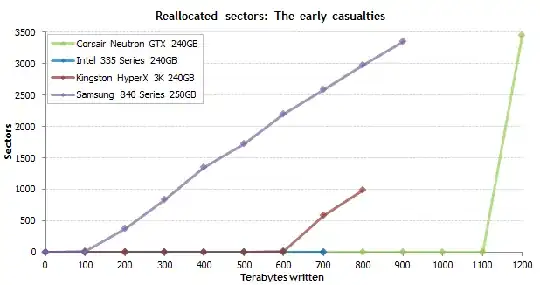2016 Update
Performance
Some more fresh data about SSDs nowadays. They typically read, write 500 MB/s. A normal decent RAM's I/O is around 10-20 GB/s. However PCI-e SSD exist; they do have a good I/O rate (1-2 GB/s), but still they do perform like RAM in early-mid 2000s.
Performance ratios are:
- If RAM is 100%
- PCI-e SSD is around 10%
- SSD is around 2,5-5%
- HDD is around 0,25-1%
If you did have an HDD, your virtual memory might get a good increase in performance.
Price
Regular SSD became cheap, but PCIe SSD with good I/O is not really cheap yet. Just do the math; out of PCI-e SSD price you can buy a new motherboard with new RAM, and voila, problem solved.
On the other hand, since SSD became more affordable, they are very much available for low money, and actually I will reuse my old 96 GB SSD as virtual memory. I can't really sell it, so I can use it for virtual memory. Well, why not? It is still better than an HDD. If you have to have a page file, put it on a legacy drive.
Reliability
The following test shows that many of them fail after a while.

100-600 terabytes are really a lot of I/O, and if you have let's say 48 GB virtual memory, if you read and write all in and out, it means at least 2000 iteration before the first bad sectors, but if you have a reliable disk, it is more like 10000 or more. I would assume it is more than two or three years of usage.
Sum
I would use it as a virtual drive if I really need it, but if it is an available option, just expand your RAM as far as you can in necessity. Use this virtual memory only if you run out of options. On the other hand, you can use your older SSD for this purpose, and you can replace it for 30-40 USD any time if fails (probably won't for a long while), it can be useful.
PCI-e SSD for virtual memory: if you want to burn money, or if you have absolutely no other choice.
One last sidenote: if you now have only HDD, go and get an SSD, migrate your operating system, you will feel like you bought a new computer.
